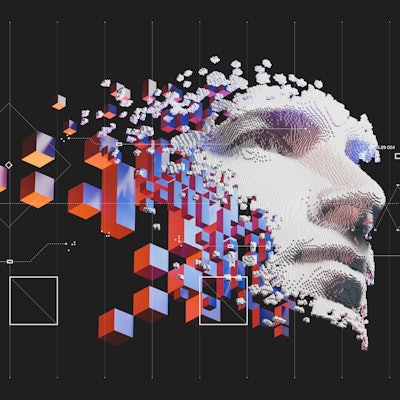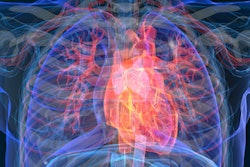
Will using artificial intelligence (AI) for image interpretation tasks help radiologists enhance their value or will it eventually lead to fewer radiologist jobs? Point/counterpoint articles published online February 3 in the American Journal of Roentgenology shared two potential visions for radiology's future.
In their point article, Dr. Randy Miles and Dr. Constance Lehman, PhD, of Massachusetts General Hospital said that applying AI tools for image interpretation will enable precision medicine, which shows potential for improving patient outcomes and lowering healthcare costs.
"Expanded use of this technology, while exciting and perhaps frightening, will undoubtedly redefine our value and future role as radiologists," they wrote.
Addressing radiologist challenges
AI could also help to address many challenges radiologists face today, said Miles and Lehman. It could, for example, help improve diagnostic accuracy by decreasing interpretation errors, as well as potentially increase patient safety by lowering variability in care. It could also prioritize exams on the radiologist worklist that may contain critical findings, as well as assist in tasks such as lesion characterization, prognostication, and treatment response prediction.
Other benefits for radiologists include the potential to use AI to triage exams below a certain risk threshold that would not require human interpretation. By decreasing workload, AI could also provide radiologists with more time for tasks that machines are not capable of handling independently, such as performing image-guided procedures, consulting with patients, conferencing with referring physicians, and teaching radiology trainees, according to Miles and Lehman.
"These tasks represent opportunities to add value to patient care outside of image interpretation, while addressing stress, fatigue, and distractions that contribute to diagnostic errors and burnout in the setting of increased clinical demands," the authors wrote.
High-quality autonomous AI interpretation could also benefit patients in underserved regions, helping to reduce health disparities, they said.
Change is coming
As radiology aims to align with the national healthcare goal of providing value-based care, leveraging AI will be a critical step in propelling radiology into Imaging 3.0, according to Miles and Lehman. The daily working life of a radiologist will change, however, when clinical practices adopt AI technology, they noted.
With the initial hype about AI eliminating the role of radiologists in the healthcare system beginning to wane, the question is now shifting to how radiologists will implement AI in their practices to enhance and expand their impact in healthcare, according to Miles and Lehman.
"To that end, it is critical that radiologists be intimately involved in guiding the rapid yet careful application of AI for image interpretation, in support of access to high-quality affordable diagnostic services for the diverse range of patients in need of radiologists' care," they wrote.
An incremental foe?
Initially, radiologists will be happy to benefit from the help of AI, realizing improved efficiency, scheduling, and protocols, said Dr. Frank Lexa of the UPMC Presbyterian Hospital in Pittsburgh and Dr. Saurabh Jha of the Hospital of the University of Pennsylvania.
"With further improvement, AI will emerge as a second reader, providing a safety net that reduces misses," they wrote in their counterpoint article. "Radiologists will be pleased with their new faceless apprentices."
But AI is unlikely to remain only in a supporting role as the technology inevitably continues to improve, according to the authors. At some point, the balance between radiologists and AI will invert, further accelerating change.
Radiologists will embrace technology that removes 10% of their most time-intensive, dull, and repetitive tasks, but if AI can do 10% of the radiologist's work, there is no reason it won't eventually be able to do 20%, 30%, and then 40% of the work, according to Lexa and Jha.
"This probably will not happen overnight," they wrote. "Rather expect a slow incremental takeover. Many will barely notice the change, except those old enough to remember their professional lives in the pre-AI era."
Impact on jobs
If AI could, for example, do 50% of the work of a radiologist, it would have a significant impact on the radiology workforce. Independent radiologists wouldn't be incentivized to hire more radiologists, while corporate or other managed environments will reason that they don't need as many radiologists as they used to, according to Lexa and Jha.
The earliest adopters of AI will likely be the rising practice models such as corporate radiology, hospital-employed radiologists, and teleradiology, according to Lexa and Jha.
"How they view AI will in large part depend on how they view radiologists, as faceless commodities or as individuals with unique skills," they wrote. "Independent radiology groups, which are declining, may strive to maintain radiologist's individuality, but this is not guaranteed, and they too may commoditize radiologists to maximize revenue."
Nonradiologist users
Lexa and Jha believe it's also possible that nonradiologists will use and own AI. For example, neurology groups could -- incentivized by bundled payments -- adopt AI to complement their interpretive skills and avoid having to pay radiologists.
"Advanced practice practitioners would welcome AI that enhances their scope of practice," they wrote. "Radiologists have few allies to slow or stop AI's deployment."
The risk of working like robots is that it's easier for robots to ultimately replace radiologists, according to Lexa and Jha.
"AI will become our foe unless the human touch to radiology is restored," the authors wrote. "Radiologists must go beyond the pixel to focus on our patients and referring physicians and on doing other tasks that AI cannot do."




















